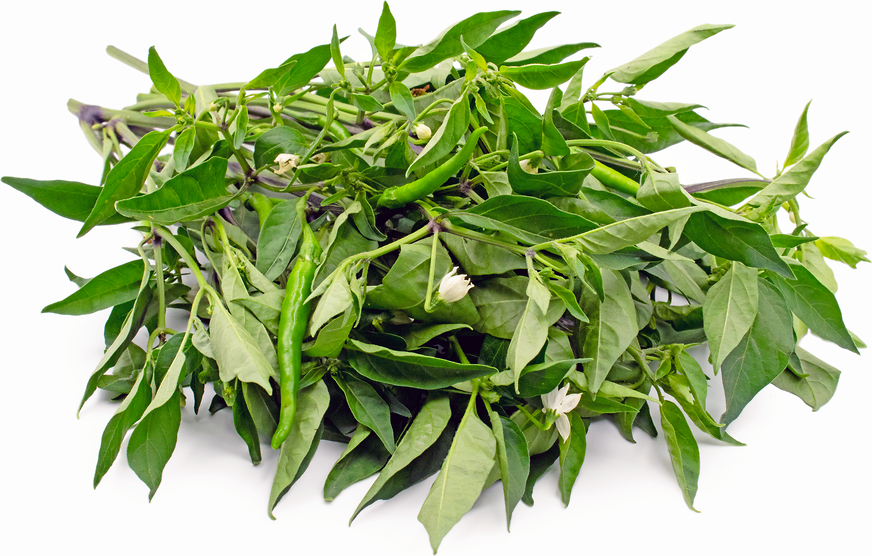


Thai Pepper Leaves
Estimated Inventory, lb : 0
Description/Taste
Thai pepper leaves are small to medium in size and long, lanceolate, or oval in shape, averaging 5-10 centimeters in length. The dark green leaves grow in an alternate pattern and are smooth on the upper surface and slightly matte and lighter green on the underside. Thai pepper leaves have smooth edges and grow on a shrub-like plant that bears red or green fruit. The leaves are best harvested when they are young and tender, similar to spinach. Unlike the fruit, Thai pepper leaves have little to no heat and instead offer a peppery, slightly sweet, and grassy flavor with a mild bitterness and warm undertones.
Seasons/Availability
Thai pepper leaves are available year-round.
Current Facts
Thai pepper leaves, botanically classified as Capsicum annuum, grow on the herbaceous perennial belonging to the Solanaceae, or nightshade family. There is no pure or standard form of Thai peppers, and many of the peppers come in different shapes, color, and sizes. The Thai pepper fruit, in general, is notorious for its extreme spiciness and is used in Thai, Malaysian, Singaporean, Indonesian, Laotian and Khmer cooking. Thai pepper leaves are also used in cooking as natural food coloring and as additional flavor.
Nutritional Value
Thai pepper leaves are a good source of vitamin A, vitamin B, and antioxidants. They also contain a small amount of capsaicin, the component in the chili pepper fruit that causes the hot sensation.
Applications
Thai pepper leaves should be cooked before consumption and are best suited for applications such as stir-frying, boiling, and sautéing. When cooked, Thai pepper leaves have a tender consistency similar to water spinach. They can be used in stir-fries with garlic, chicken, or pork and used as a garnish for soups, curries, and stews. Thai pepper leaves are also known as a colorant for Thai green curry paste. The leaves are pureed with water, strained, then added to the paste, giving it an attractive, bright green hue without adding the burning heat of the chili fruit. Thai pepper leaves will keep up to a week when stored in an airtight container in the refrigerator. They can also be frozen for extended use.
Ethnic/Cultural Info
In China, pepper leaves have been used in mouthwashes and are used topically to help reduce symptoms of muscle soreness. The juice of the leaves is also used in Javanese traditional medicine as an anti-inflammatory to help reduce skin irritation after childbirth.
Geography/History
Chile peppers are native to Mexico, South America, and Central America where they have been cultivated since 6,000 BCE. Thai peppers were likely brought to Asia by Portuguese traders around the 16th or 17th century. Today, Thai pepper leaves can be found in fresh markets in Asia, Southeast Asia, South and Central America, and Africa.




